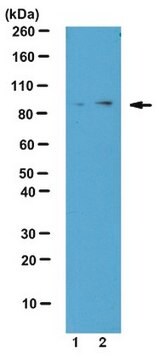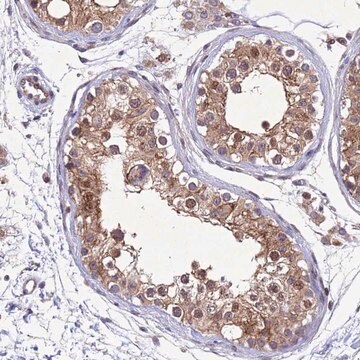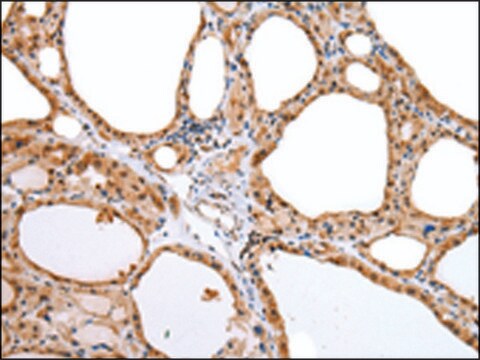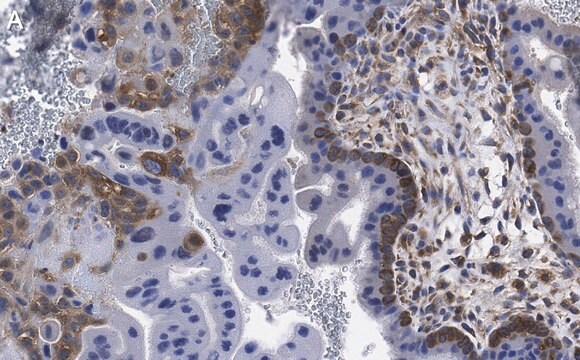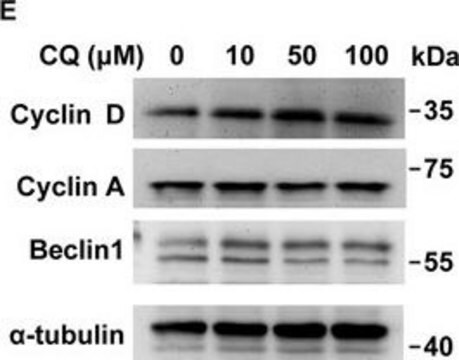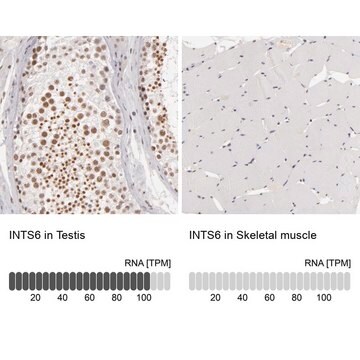General description
Cell proliferation involves the passage through a series of finely regulated phases that are known as cell cycle checkpoints1. In order to carry out a correct replication, the eukaryotic cell undergoes a series of events ensuring that each copy of duplicated chromosome exactly segregates in the daughter cells2,3. A main critical control of the cell cycle is ensuring that the DNA replication takes place and is followed by mitosis, only once for each cell cycle. Alterations in the expression of genes that regulate the cell cycle can lead to malignant transformation and tumor progression by perturbing cell proliferation and/or genomic stability4,5.
Specificity
Monoclonal Anti-Geminin antibody specifically recognizes human geminin.
Application
The antibody may be used in various immunochemical techniques including Immunoblotting and Immunofluorescence.
Biochem/physiol Actions
Geminin is a 25 kDa nuclear protein that functions by inhibiting DNA replication6. During specific phases of the cell cycle, geminin bind to Cdt1 protein and inhibits the pre-replicative complex (preRC) formation7. In eukaryotes, the origins of replication are bound by a complex of six proteins, evolutionally well conserved among different species8,9. These proteins constitute the origin recognition protein complex (ORC) (1–6), essential for the initiation of DNA replication. Thiswas first identified in Saccharomyces cerevisiae as protein that bound to the core ARS consensus sequence10. The ORC complex serve as a chromatin substrate for the assembly of other replication initiation factors such as Cdc6, an ATPase family member, and Cdt111,12. The recruitment of these proteins induces a chromatin structural change that promotes the loading of the mini-chromosome maintenance proteins (MCMs 2–7) onto the ORC/chromatin complex13. The MCM proteins have a similar helicase activity and are able to unwind the DNA double helix in order to make it more accessible to the action of different polymerases14. During the G1 phase of the cell cycle, the proteins are sequentially recruited to the origins of replication forming the preRC15. At the G1/S transition, the licensed origins are activated by the activity of cyclin E/CDK2, cyclin A/CDK2 and Cdc7-Dbf4 kinases and by the recruitment of MCM10 protein16,17. Cdt1 cooperates with Cdc6 to promote the DNA initiation by regulating the formation of preRC through the recruitment of MCMs on the chromatin associated with ORCs18,19. The Anti Geminin Antibody may serve as an important tool for cell proliferation and differentiation research.
Physical form
Supplied as a solution in 0.01 M phosphate buffered saline pH 7.4, containing 15 mM sodium azide as a preservative.
Storage and Stability
For continuous use, store at 2-8°C for up to one month. For extended storage, freeze in working aliquots. Repeated freezing and thawing is not recommended. If slight turbidity occurs upon prolonged storage, clarify the solution by centrifugation before use. Working dilution samples should be discarded if not used within 12 hours.
Disclaimer
Unless otherwise stated in our catalog our products are intended for research use only and are not to be used for any other purpose, which includes but is not limited to, unauthorized commercial uses, in vitro diagnostic uses, ex vivo or in vivo therapeutic uses or any type of consumption or application to humans or animals.
